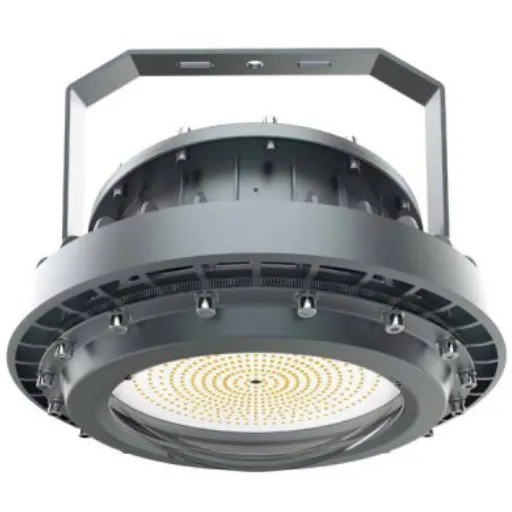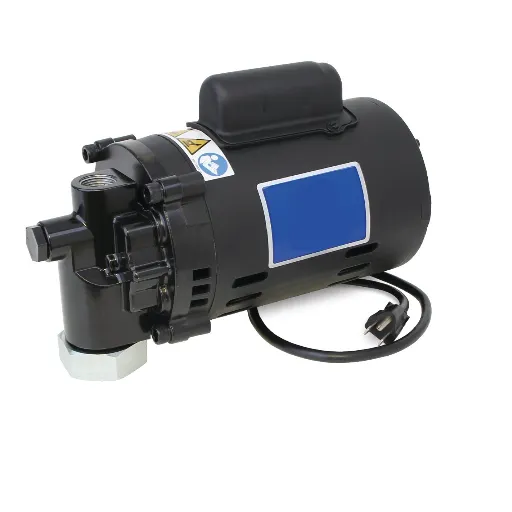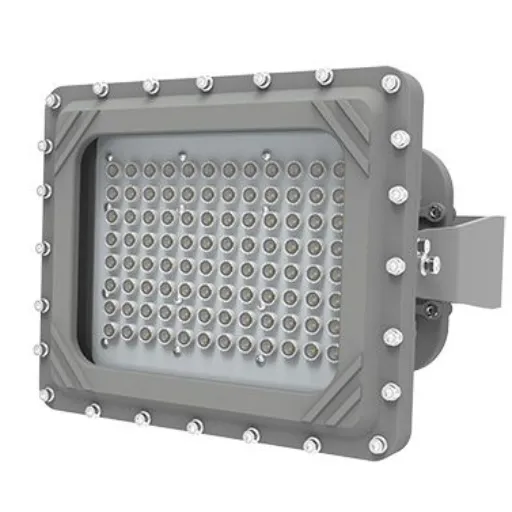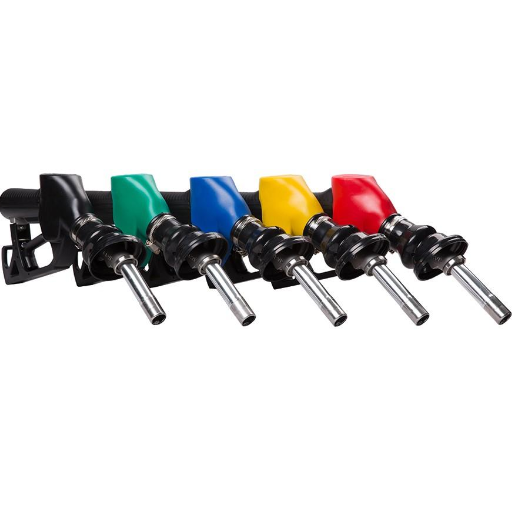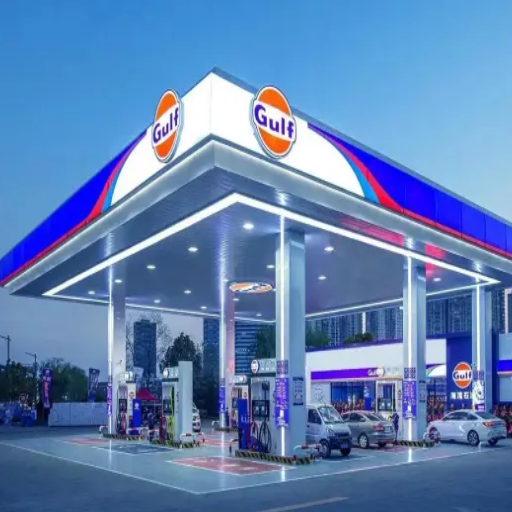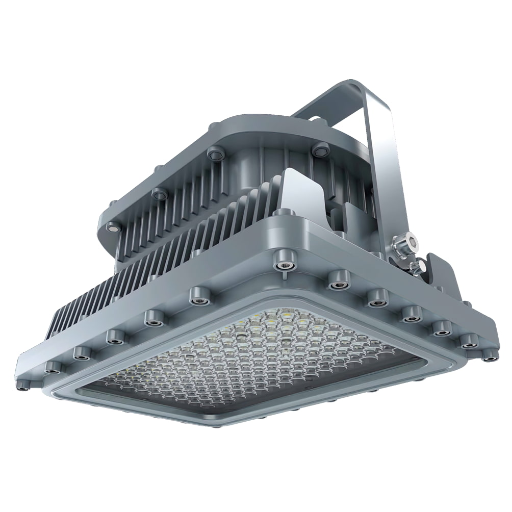Pulling up to a gas pump is, for many, just another mundane exercise of selecting fuel, detaching the nozzle, and filling up your tank. However, there is considerable intricacy in the design and operation of diesel and gas nozzles. It is essential to know how they differ to uphold your safety and expedite the fueling process. Whether you are a newly minted driver, a seasoned motorist, or simply curious about automotive efficiency, this guide covers the fundamental differences between diesel and gasoline nozzles and the pumps that drive them. By the end, you will have in-depth knowledge not only on how they operate but also on why those differences exist and how they affect your vehicle, as well as the environment. So, let us delve into the nitty-gritty details of fuel nozzles and pumps – just small tools with great power over your driving experience.
Overview of Fuel Nozzles
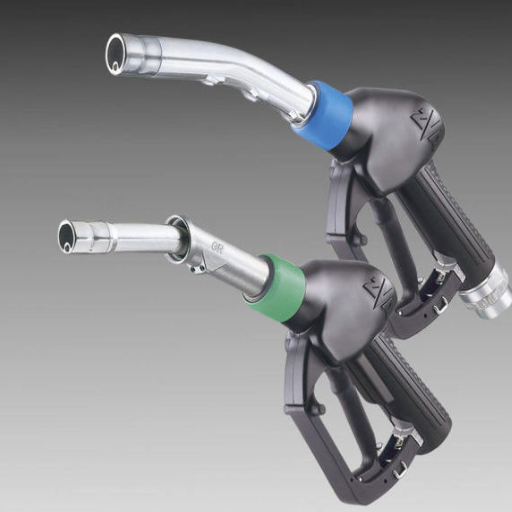
Fuel nozzles are the components used at gas stations to dispense fuel into vehicles. They are designed with specific mechanisms to ensure safety, efficiency, and compatibility with different types of fuel. Diesel nozzles are typically larger in diameter than gasoline nozzles to prevent accidental refueling of a gasoline engine with diesel fuel, as this can cause significant engine damage. Additionally, modern fuel nozzles often feature an automatic shut-off mechanism to stop the flow of fuel when the tank is full, thereby preventing spills. This vital piece of equipment ensures that vehicles are refueled effectively while minimizing risks for both the user and the environment.
What is a Fuel Nozzle?
A fuel nozzle serves as a critical component of refueling systems, designed to provide precise and safe fuel dispensing into a vehicle’s tank. The nozzles are designed for various types of fuel, including gasoline, diesel, and alternative fuels such as ethanol and biodiesel. During refueling, the modern fuel nozzle offers fuel efficiency and safety with great prominence.
The innovative feature of the fuel nozzle is its automatic shut-off when the vehicle tank is full. This also helps prevent overflows, which can spill into the environment. Hence, any fuel wastage may be reduced. The latest technology of fuel nozzles with vapor recovery systems effectively destroys or captures almost all harmful fumes released during the refueling process, thereby significantly reducing the release of contaminants into the atmosphere and contributing to improved air quality.
Key Features of Modern Fuel Nozzles
- Material Construction: Made from stainless steel and composite plastics for durability
- Safety Design: Larger diameter diesel nozzles prevent misfueling
- Innovative Technology: Flow meters and digital monitors for accurate dispensing
- Environmental Protection: Vapor recovery systems capture harmful emissions
When fuel nozzles are designed for different fuel types, distinguishable design variants often become a key marketing feature. For instance, the diameter of diesel nozzles is intentionally made larger than that of gasoline nozzles to avoid mistakes that could lead to costly engine repairs due to misfueling. According to fueling industry reports, modern nozzles are made from a combination of stainless steel and composite plastics, providing high endurance against wear and tear in regular, heavy use.
Intelligent fuel technologies, such as smart nozzles with flow meters and digital monitors, significantly enhance the fueling experience. Track accurately how much fuel has been dispensed and give ways to optimize fuel use for both retail and commercial users. With the rapid advancements in technology and today’s increasing concern for the environment, modern fuel nozzle designs continue to prioritize safety, efficiency, and sustainability.
Types of Fuel Nozzles
Fuel nozzles can be of several types, depending on the specific application requirements. They are mainly divided into:
| Nozzle Type | Description | Primary Use | Key Features |
|---|---|---|---|
| Automatic Shut-Off Nozzle | Features an automatic shut-off mechanism to prevent overflows | Gas stations, consumer vehicles | Safety, waste reduction |
| High-Flow Nozzle | Dispenses fuel at faster rates for large vehicles | Commercial and industrial applications | Rapid fueling, efficiency |
| Manual Nozzle | Manual control to stop fuel flow | Simple applications, precise control | User-controlled dispensing |
| Vapor Recovery Nozzle | Captures and returns fuel vapors to the storage tank | Environmental compliance | Emission reduction, fuel conservation |
| Diesel Nozzle | Designed specifically for diesel vehicles | Diesel-powered vehicles | Larger diameter, cross-fueling prevention |
Fuel nozzles, depending on the application, are designed with safety, efficiency, and practical usability in mind, and are thus a crucial part of modern fueling systems.
Importance of Nozzle Selection
The proper selection of the fuel nozzle is crucial for operational efficiency, environmental protection, and safety. A nozzle design compatible with fuel type and vehicle requirements can eliminate the chances of fuel contamination, spills, or cross-fueling, which can lead to expensive repairs and downtime.
Safety and Environmental Benefits
- Spill Reduction: Properly selected nozzles can reduce fuel spillage by 20%
- Vapor Capture: Modern systems capture approximately 95% of harmful vapors
- Efficiency Gains: High flow rate nozzles cut refueling times by 30% for commercial fleets
- Compliance: Ensures adherence to environmental regulations and safety standards
For instance, modern automatic shut-off nozzles prevent overflow during refueling, consequently reducing fuel wastage and environmental pollution. It has been found that carefully selected nozzles can reduce fuel spillage by 20%, thereby saving the environment and the end user. Those nozzles with vapor recovery systems will capture approximately 95% of the harmful vapors, thereby significantly reducing emissions during refueling.
The adaptability of these modern nozzles further promotes the development of the fueling infrastructure, such as nozzles with high flow rates that cut refueling times for commercial fleets by almost 30 percent and maximize efficiency. A nozzle is the ideal tool for delivering superior performance while meeting environmental regulations and safety standards, thereby ensuring the long-term reliability and compliance of individuals and businesses.
Diesel Fuel Nozzles
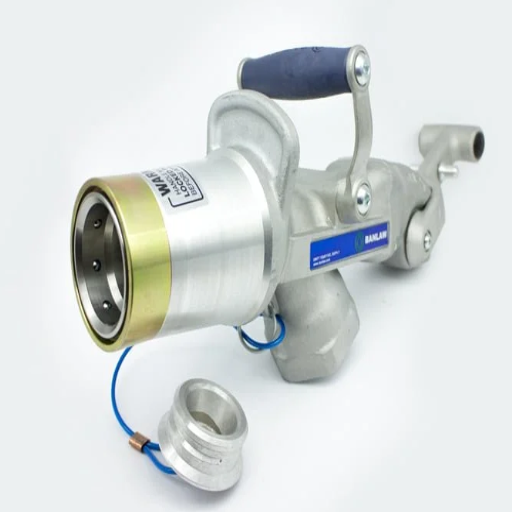
Diesel fuel nozzles have been specifically designed to accommodate the unique characteristics of diesel fuel, ensuring proper transfer during refueling. They are designed to accommodate the higher viscosity of diesel, which also means they have an automatic shutoff mechanism that halts the flow of fuel whenever the can is full, thereby averting potential spills. Most diesel nozzles are coded by color to prevent confusion with gasoline and ensure safe use. Diesel nozzles, be they for personal cars, commercial fleets, or heavy equipment, are all essential components, providing some safety assurance and complying with modern fueling systems.
Characteristics of Diesel Fuel Nozzles
Diesel fuel nozzles are designed to cater to the characteristics of diesel fuel, ensuring efficiency and safety during the dispensing process. These nozzles are larger in diameter than the gasoline ones, which coincides with the size of diesel fuel tanks for vehicles and machinery. Such an arrangement helps in avoiding cross-contamination of gasoline and diesel fuels.
Technical Specifications
- Flow Rate: 60-80 liters per minute for rapid refueling
- Pressure Handling: Designed for high-pressure fuel systems
- Material: Heavy-duty aluminum or stainless steel construction
- Safety Features: Automatic shut-off and vapor recovery systems
One key characteristic of these nozzles is that they must sustain a high-pressure flow rate. Modern diesel systems are highly efficient; therefore, their nozzles can fill diesel in a very short time—some can dispense from 60 to 80 liters per minute. This attribute is convenient for commercial and industrial use, where big equipment requires rapid refueling to minimize downtime.
Advanced diesel nozzles often feature automatic-pop-off capabilities to prevent spills. These capabilities utilize sensors that measure air pressure. Once a certain threshold is reached, such as when the tank is full, fuel flow is automatically halted to avoid further filling and spills. Additionally, many nozzles feature a vapor recovery system that captures fuel vapors during refueling, thereby reducing emissions and promoting environmental safety.
A further consideration is the durability of the materials used throughout the manufacture of diesel fuel nozzles. Such applications require heavy-duty metal construction, typically aluminum or stainless steel, which can withstand the abrasive nature of diesel fuel and harsh service environments. In several instances, operator comfort and longevity are considered, resulting in ergonomic designs and protective coatings.
Modern innovations, such as swivel connectors, help prevent hose tangling. At the same time, magnetic breakaway components add an extra layer of safety, enabling the nozzle to disconnect automatically if subjected to undue pulling force. These features together ensure that diesel nozzles provide an efficient, safe, and environmentally acceptable delivery of fuel.
How Diesel Fuel Nozzles Work
Diesel fuel nozzles work on a mechanism that ensures correct, precise, and efficient delivery of fuel. The nozzle consists of a solenoid valve that controls fuel flow, with activation by the dispenser. Once the trigger is pressed at the pump, the solenoid valve opens, allowing diesel to flow through the nozzle into the vehicle’s fuel tank.
The daemon responsible for the nozzle shut-off is another crucial factor in the operation of the nozzle. The small venturi tube creates a vacuum when the fuel flows through the nozzle. At some point, the fuel level in the tank reaches the nozzle opening, which disrupts the vacuum formed. The automatic shut-off then kicks in to prevent further filling, thereby stopping a spill or overfill.
A standard diesel nozzle is designed for the specific range of viscosity and flow rate corresponding to diesel fuel. This flow rate commonly ranges from 15 to 40 gallons per minute in commercial applications, ensuring quick and accurate filling of larger-capacity diesel tanks.
Further modern advancements include diesel nozzles equipped with filtration systems and pressure-sensing devices, which provide consistent flow rates and ensure optimal performance. All the enhancements contribute to an efficient system that complies with environmental regulatory standards by minimizing fuel loss and vapor emissions. It is from these multiple interacting systems that we gather evidence of the intricate engineering behind diesel fuel nozzles and their importance in modern fuel systems.
Advantages of Using Diesel Fuel Nozzles
Precision & Efficiency
Highly accurate fuel delivery systems prevent waste and enhance vehicle performance through precise atomization, resulting in improved engine efficiency.
Superior Fuel Economy
Diesel vehicles achieve 20-30% better fuel efficiency than their gasoline counterparts, making them ideal for long-haul and heavy-duty applications.
Diesel fuel nozzles offer a range of advantages that promote efficiency and sustainability. The engineering behind these nozzles is highly accurate, featuring precise fuel delivery systems that prevent waste and enhance vehicle performance. The latest diesel nozzles have been designed to operate with high-pressure fuel systems, enabling the engines to be more efficient and the fuel to be atomized more effectively. According to current analysis, diesel vehicles are reported to achieve 20-30% more mileage than their gasoline counterparts, making diesel engines a more economical option for long-haul and heavy-duty applications.
Additionally, most diesel fuel nozzles nowadays are equipped with automatic shut-off mechanisms, which stop the flow once the fuel has overflowed or is on the verge of spilling. This feature is extremely crucial from both safety and environmental protection perspectives. These shut-off mechanisms also minimize vapor emissions, thereby aligning with the ever-tightening global emissions standards. Due to advances in material technology used for manufacturing nozzles, including stainless steel and cutting-edge composites, the intricacies of fabrication have been greatly enhanced, particularly in terms of durability, longevity, and lifespan. Thus, this excellent fusion of efficiency with sustainability establishes diesel fuel nozzles as a key ingredient in the forefront of modern-day transportation and industrial fueling systems.
Gas Nozzles
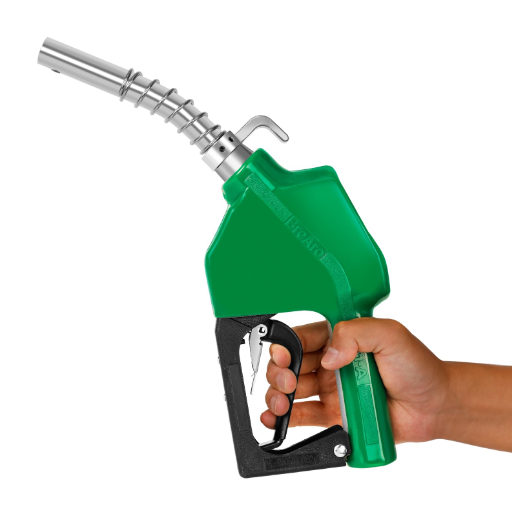
Gas nozzles are integral to dispensing fuel safely and efficiently into vehicles. Their design incorporates mechanisms preventing overflows and spills, allowing for accurate fuel dispensing. Modern gas nozzles feature an automatic shut-off device that ceases fuel flow once the tank is adequately filled, thereby minimizing waste and reducing environmental hazards. Constructed with longevity in mind, modern nozzles are usually made from materials that withstand daily use and exposure to fuel. They have ergonomically designed handles that are both easy to grip and safe for consumers to use.
Characteristics of Gas Nozzles
Various modern technologies have been incorporated to ensure gas nozzles remain safe, efficient, and environmentally friendly. One such essential attribute is the vapor recovery systems. These systems capture and redirect harmful fuel vapors that would otherwise escape into the atmosphere, thereby significantly reducing air pollution. According to recent developments in fuel dispensing technology, vapor recovery nozzles can retain up to 95% of evaporated fuel, thereby helping to keep the atmosphere clean.
| Application Type | Flow Rate (GPM) | Primary Use | Design Focus |
|---|---|---|---|
| Commercial Nozzles | 15-40 | Large vehicles, industrial machines | High volume, rapid dispensing |
| Personal Vehicle Nozzles | 10-12 | Consumer cars | Precision, spill prevention |
| Standard Gas Nozzles | 5-10 | Typical consumer vehicles | Safety, efficiency |
Moreover, nozzles are provided with varying flow rates for diverse refueling applications. For instance, commercial nozzles are often designed with higher flow rates—that is, from 15 to 40 gallons per minute (GPM) — which suit refueling large vehicles or industrial machines. On the contrary, the flow rates of the personal vehicle nozzles are kept lower, typically at around 10 to 12 GPM, as this allows for better precision and avoids spillage.
Another characteristic relates to the weather-resistant materials used in the construction of gas nozzles. Such materials, including aluminum alloys and high-grade polymers, are lightweight but equally capable of withstanding extremes in temperature and exposure to fuels over a specified time span. Besides, modern nozzles also come with the best compatibility to several fuel types, ranging from gasoline, petrol, and diesel, to even biodiesel, rendering it highly versatile for numerous applications.
The ergonomic features of gas nozzles also protect users and promote comfort. Nowadays, several available models feature swivel connectors that ease hose tangling and strain. Additionally, the handle grips are easy to grasp, providing more control while fueling. Design considerations thus offer consumers a better user experience without compromising on strict safety protocols.
How Gas Nozzles Work
Gas nozzles work through a combination of mechanical and fluid dynamics concepts, ensuring that fuel is dispensed efficiently and safely. The most critical component of a gas nozzle is the automatic shut-off mechanism, which prevents fuel overflow while the fuel tank is being filled. This mechanism uses a small vacuum tube inside the nozzle. When the tank is filled to a level where fuel blocks the opening of the vacuum tube, a change in pressure is registered, activating the nozzle to stop fuel dispensing.
Operating Mechanism
- Flow Control Valve: Actuated by squeezing the nozzle handle
- Vacuum Tube System: Detects tank fullness through pressure changes
- Vapor Recovery: Captures and redirects fuel vapors during refueling
- Pressure Regulation: Maintains consistent flow rates of 5-10 GPM
A valve for controlling fuel flow is present inside the nozzle. This valve is actuated when the nozzle handle is squeezed, allowing fuel to flow from the pump into the tank. Modern nozzles regulate flow rates with great precision and are capable of dispensing fuel at rates ranging from approximately 5 to 10 gallons per minute for typical consumer vehicles, and significantly higher rates for commercial and industrial vehicles.
For safety reasons, and especially in areas with stringent environmental laws, gas nozzles are also equipped with vapor recovery systems. These systems capture and redirect vapors released during refueling, preventing them from escaping into the atmosphere and instead sending them back into the pump or storage tank, thereby minimizing further air pollution.
Continuous innovations in materials and design allow gas nozzles to offer enhanced durability against wear. Some models utilize stainless steel and carefully designed seals to withstand long-term exposure to various fuel types, ensuring consistent performance even in adverse conditions.
Advantages of Using Gas Nozzles
Environmental Benefits
Gas nozzles with vapor recovery equipment can capture up to 95% of fuel vapors during refueling, significantly reducing air pollution and greenhouse gas emissions in line with global environmental efforts.
Gas nozzles offer several benefits, making them valuable tools in various modern fueling systems. One significant advantage turns out to be environmental protection. The nozzles with vapor recovery equipment can capture up to 95 percent of the fuel vapors that emanate during the refueling process, thereby reducing air pollution in line with the world’s efforts to curb these greenhouse gas emissions.
The second advantage stems from efficiency and safety in fuel dispensing. Equipped with an automatic shut-off feature, these nozzles lessen or eliminate fuel spillage, which can harm the environment and raise safety concerns. Studies show that such devices can reduce losses by up to 35%, especially in commercial fuel stations, thereby saving potential costs.
Advancements in nozzle technology have also significantly improved their durability and compatibility with different fuels. In modern times, gas nozzles are primarily designed to withstand prolonged exposure to various fuel types, including ethanol blends and biodiesel, without compromising performance. For example, some gas nozzles utilize corrosion-resistant materials, such as stainless steel and fluoropolymers, for enhanced durability, making them a viable investment for fuel stations and industries.
A low trigger resistance, combined with ergonomically designed handles, would make the fueling experience more pleasant for consumers and easier to work with, even during prolonged refueling sessions. Hence, these gas nozzles will find their utility throughout a wide range of applications, from fueling personal vehicles to engaging in heavy industrial shape-shifting.
Comparative Analysis: Diesel Nozzle vs Gas Nozzle
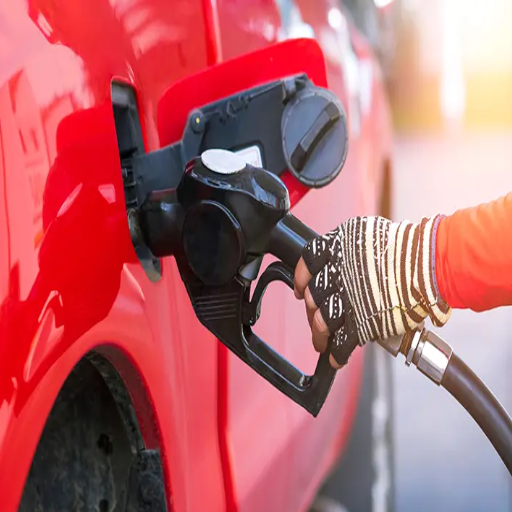
The design differences between diesel and gasoline nozzles reflect the contrasting properties of the diesel and gasoline fuels. Diesel nozzles usually have a larger diameter due to the higher viscosity of the diesel fuel, which is slower flowing than gasoline. With diesel fuel, these nozzles also incorporate a sensor that prevents mistaken refueling by ensuring that diesel cannot be poured into a gasoline vehicle with a narrower fuel tank opening.
| Feature | Diesel Nozzles | Gas Nozzles |
|---|---|---|
| Diameter | Larger diameter for diesel compatibility | Smaller diameter for gasoline vehicles |
| Flow Rate | 15-40 GPM (commercial), 60-80 L/min | 5-10 GPM (consumer), 10-12 GPM (personal) |
| Fuel Viscosity | Designed for higher viscosity diesel | Optimized for lower viscosity gasoline |
| Safety Features | Cross-fueling prevention, auto shut-off | Auto shut-off, vapor recovery |
| Material | Heavy-duty aluminum/stainless steel | Aluminum alloys, high-grade polymers |
| Primary Use | Commercial trucks, heavy equipment | Personal vehicles, light applications |
Contrarily, gas nozzles have smaller diameters to fit gasoline-powered cars. These nozzles also generally dispense fuel faster, thereby reducing refueling time.
The two nozzles are safe to use, equipped with auto-shutoff features to prevent overflows and minimize spills. Ultimately, the choice between the two is determined by the type of fuel to be dispensed and the machinery to be fueled.
Efficiency in Fuel Delivery
Efficiency in fuel delivery is crucial for preventing energy wastage and optimizing performance across various applications. The modern fuel delivery system works by minimizing losses and dispensing the least amount of fuel possible. For example, with improved pumping techniques, such as variable flow control systems, high accuracy in fuel delivery is achieved, preventing overfueling and saving energy. Studies conducted in commercial-environment settings to measure fuel delivery speeds show that rates can exceed 60 gallons per minute with high-speed dispensers, reducing refueling time for heavy-duty vehicles. On a different note, modern nozzles fitted with vapor recovery systems can capture and recycle fuel vapors during refueling processes, thereby reducing harmful emissions and sustaining the environment.
Delivery Efficiency Metrics
- High-Speed Dispensers: Can exceed 60 gallons per minute
- Vapor Recovery: Systems capture nearly 95% of vapor emissions
- Digital Monitoring: Data analytics optimize consumption and prevent losses
- Automated Controls: Minimize human error and maximize precision
Industry figures suggest that the systems can capture nearly 95% of vapor emissions, posing as a strong candidate for compliance with stringent environmental laws. Automation and digitalization play a significant part in making processes more efficient, with innovative fuel management systems utilizing data analytics to monitor consumption, prevent loss, and enhance refueling logistics. These enhancements collectively make today’s fuel delivery methods dependable and efficient.
Compatibility with Fuel Pumps
Modern fuel delivery systems are designed to be highly compatible with various fuel pump models, enabling easy integration and optimal performance. Compatibility is measured by how well the system supports multiple fuel types, flow rates, and dispensing requirements. For example, newer nozzle designs and flow control technologies have been developed to fit both conventional pumps and those with higher capacities, ensuring the shortest refueling time and enhanced efficacy.
According to industry reports, the next-generation pumps prioritize compatibility with alternative fuels, such as biodiesel, ethanol blends, and CNG. Equipped with corrosion-resistant materials and superior sealing methods, these systems handle the chemical properties of these fuels without degrading performance. It has been reported that around 80% of the fuel pumps manufactured today are compatible with alternative fuels, indicating a gradual shift toward energy sustainability.
Compatibility Features
- Alternative Fuel Support: 80% of modern pumps are compatible with biodiesel, ethanol, and CNG
- Programmable Interfaces: Configurable for different fuel grades and payment methods
- IoT Integration: Real-time monitoring of dispensing rates and tank levels
- Diagnostic Capabilities: Automated alerts for maintenance and safety issues
These days, interfaces to guard the fuel pumps are increasingly embedded with programmable technology, allowing them to be configured according to changing modes of fuel grades or payment methods. They thereby promote the parties involved, such as fleet managers or final users, through a flexible and easy-to-operate approach. With further developments in software integration and IoT-enabled devices, these real-time monitors provide overdispensing rates, tank levels, and diagnostic alarms, thereby contributing to reliability and ease of use.
Environmental Considerations
Environmental Impact Reduction
Modern fuel pump technologies prioritize minimizing environmental impacts through enhanced energy efficiency, the use of sustainable materials, and advanced emission control systems.
In today’s setting, fuel pump technologies focus on minimizing environmental impacts. Energy efficiency is the primary target of various systems, which incorporate high-level energy savings to reduce electricity consumption during operation. For instance, using VFD in some pumps adjusts motor speeds to save energy when it is not required.
Furthermore, there has been a shift in the industry toward sustainable pump manufacturing materials, in which traditional materials are being replaced with recyclable or environmentally friendly materials. One such significant development has been the introduction of vapor recovery technology. This technology is designed to reduce the release of volatile organic compounds (VOCs) during refueling, decreasing pollution and harmful emissions in the air. Recent findings indicate that the implementation of vapor recovery systems results in a 95 percent reduction in VOC emissions, leading to a significant improvement in air quality.
Further developments in spill supervision and control have been put forward, considering the high-level risks that spills pose to soil and water quality. Such IoT-enabled leak detection systems will then be able to respond quickly in the event of potential spills, thereby preventing massive environmental damage. These developments serve as a testament to the green promise made by the industry while complying with stringent environmental regulations. With continuous innovations, fuel pump technologies pave the way for a greener Earth.
Choosing the Right Nozzle for Your Needs
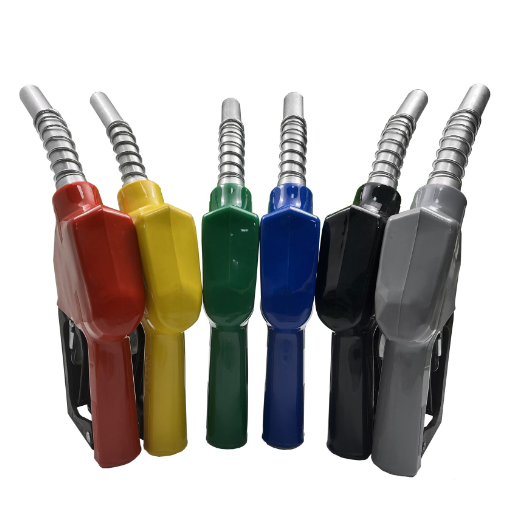
Selecting the proper nozzle for your particular fueling need will depend on various factors. Depending on the type of fuel being dispensed, a conventional gas nozzle is specifically designed for gasoline. In contrast, a diesel nozzle is designed to handle diesel fuel, and another variant may be built for alternative fuels. Furthermore, the flow rate must be carefully considered, as a higher rate is more suitable for commercial/industrial applications, while a lower rate typically suits personal or small-scale applications. Compatibility will also need to be considered, so the nozzle must fit your fuel pump system to ensure precise safety standards are met. As an added solution, one can always refer to the supplier or manufacturer’s manual.
Factors to Consider When Selecting a Nozzle
Selection Criteria Checklist
- Fuel Type Identification: Determine gasoline, diesel, biodiesel, or alternative fuels
- Flow Rate Requirements: Heavy flows for industrial use, lighter flows for personal vehicles
- System Compatibility: Thread compatibility and pump pressure requirements
- Safety Features: Automatic shut-off mechanisms and regulatory compliance
- Durability Considerations: Materials suitable for working conditions
It is essential to consider several key factors when selecting a nozzle to ensure efficiency, compatibility, and safety. First, identify the type of fuel to be dispensed, as nozzles are designed for gasoline, diesel, biodiesel, or other alternative fuels, making compatibility a must. Second, determine the required flow rate, as heavy flows are necessary in industrial or commercial use, while lighter flows are used for smaller applications, such as personal vehicles. Third, the nozzle should be compatible with the existing fueling system, including threads and pump pressure requirements. Furthermore, safety features should be the top priority, including an automatic shut-off mechanism to avoid spills and regulatory compliance, among others. Finally, consider the preferred durability and materials of the nozzle, taking into account the working conditions, especially if the conditions are harsh. Manufacturer guidelines should be checked for valuable tips to ensure that the nozzle meets the requirements satisfactorily.
Impact on Refueling Efficiency
I believe the type of fuel nozzle has a significant impact on the efficiency of vehicle refueling. If a nozzle is well-aligned, with safety being its primary concern, and durable in construction, operations run smoother, and fewer delays result. These factors are carefully balanced to achieve maximum efficiency while maintaining safety and compliance standards.
Cost-Effectiveness Analysis
Cost-Effectiveness of Diesel vs Gas Nozzles
Several key points need to be considered to evaluate the cost-effectiveness of diesel and gas nozzles, including aspects such as compatibility, durability, and efficiency.
| Cost Factor | Diesel Nozzles | Gas Nozzles | Long-term Value |
|---|---|---|---|
| Initial Purchase Price | Higher upfront cost | Generally less expensive | Diesel: Higher investment |
| Durability | Designed for high viscosity, more durable | Suitable for lighter fuels | Diesel: Better longevity |
| Maintenance | Robust construction, less frequent replacement | Standard maintenance requirements | Diesel: Lower maintenance frequency |
| Misfueling Prevention | A larger diameter prevents costly engine damage | Standard diameter for gasoline vehicles | Diesel: Prevents expensive repairs |
| Commercial Applications | High-volume, heavy-duty use | Light to medium applications | Diesel: Superior for commercial use |
Diesel nozzles are designed to withstand the thicker viscosity of diesel fuel, offering added durability and long-term reliability, a factor that may contribute to the higher price consideration. Gas nozzles, however, being generally less expensive, are designed and suited for lighter fuels and thus unsuitable for diesel applications. Diesel nozzles are usually of a larger diameter, preventing misfuelling of non-diesel vehicles and thereby avoiding costly repairs due to cross-contamination. Hence, although a diesel nozzle may require the customer to pay more upfront, both in terms of durability and usage in high-volume commercial scenarios, diesel nozzles often provide better long-term value when compared to gasoline nozzles, where applicable. The key to cost-effectiveness, then, is balancing the simplest purchase price with application-specific performance.
Investment Decision Guide
- Choose Diesel Nozzles if: You operate commercial fleets, require high-volume dispensing, or prioritize long-term durability.
- Choose Gas Nozzles if: You need cost-effective solutions for light applications, personal vehicles, or standard gasoline dispensing.
- Consider Both: Multi-fuel stations benefit from having both types to serve all vehicle types safely.
Final Recommendations
When selecting fuel nozzles, prioritize safety, compatibility, and long-term value over initial cost savings. Selecting the correct nozzle ensures regulatory compliance, prevents costly errors, and optimizes operational efficiency. Always consult the manufacturer specifications and consider professional installation for optimal performance and safety.
Frequently Asked Questions (FAQs)
What is the difference between a diesel nozzle and a gas nozzle?
A diesel nozzle is designed to dispense diesel fuel, and a gas nozzle is designed to dispense unleaded gasoline. Diesel nozzles usually have a thicker diameter so that diesel fuel, with a thicker viscosity, can be passed. The design of these nozzles may also include features that prevent cross-contamination of the two fuel types, ensuring that the correct fuel is dispensed into the respective vehicles.
How do fuel dispensing nozzles operate?
Fuel dispensing nozzles facilitate the interface between the controlled flow of fuel from a fuel dispenser and the vehicle’s fuel tank, ensuring a seamless connection. Upon inserting the filler neck of the nozzle into the tank, the lever is pressed down to activate the pump, which delivers the fuel. The nozzle also has a shut-off feature that stops the flow of fuel when the tank is full.
Is it possible to manually operate a diesel fuel nozzle?
Yes, you can use a manual fuel nozzle for diesel; however, it is essential that the nozzle is specifically designed for diesel fuel to avoid compatibility problems or fuel transfer issues. Typically, diesel nozzles are equipped with features that enable high-flow fuel delivery, which is crucial for efficiently filling larger fuel tanks.
What advantages does an automatic fuel pump nozzle present?
The advantages of an automatic fuel pump nozzle include ease of use and enhanced convenience, as it automatically shuts off when the tank is full, thereby preventing spillage and waste. This feature enables users to easily adjust the fuel level to the desired amount without requiring physical manipulation of the nozzle during dispensing.
What is a high-flow fuel nozzle?
High-flow fuel nozzles deliver fuel at a faster flow rate than their standard counterparts. These nozzles are best suited for use in commercial stations and transfer facilities where large volumes of fuel must be conveyed quickly and efficiently. They are particularly suitable for fuel transfers to machinery or vehicles fitted with larger tanks.
Are there any special nozzles for AdBlue?
Yes, there are special nozzles for dispensing AdBlue, a liquid that reduces emissions from diesel engines. The nozzles have been engineered to prevent contamination and ensure a proper dosage of AdBlue. The design features a narrower spout and a unique connector that provides an appropriate fit into the AdBlue tank.
How do I know whether I have the correct nozzle for my type of fuel?
You can ensure you have the correct nozzle for your fuel type by checking both the nozzle itself and the fuel dispenser for labels. They often are color-coded or marked to indicate whether they are for unleaded gasoline or diesel fuel. Additionally, the nozzle’s shape and size usually serve as clues; for example, diesel nozzles are typically larger in diameter than gas nozzles.
What features should I ask for in fuel dispensing nozzles?
When selecting fuel dispensing nozzles, look for hold-open types that allow you to free your hands from continuous operation. Additionally, consider installing an automatic shut-off mechanism to prevent spillage. Faster flow rates are worth considering if speedy delivery is crucial for transferring fuel. Most importantly, your services, when paired with the correct nozzle, should prove safe and swift.

